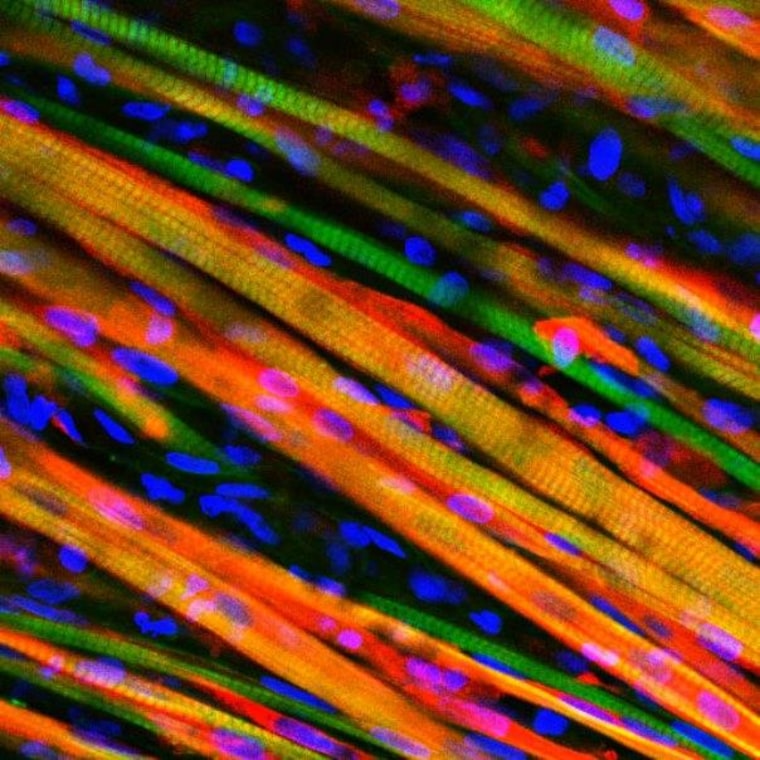Biomedical engineers have developed lab-grown skeletal muscles that can flex as strongly as the natural-born items, work the way they're supposed to when they're implanted in mice — and even heal themselves if they're hurt.
"The muscle we have made represents an important advance for the field," Duke University's Nenad Bursac said in a news release about the project. "It's the first time engineered muscle has been created that contracts as strongly as native neonatal skeletal muscle."
The results were published online Monday by the Proceedings of the National Academy of Sciences.

Researchers have been working on engineered muscle fibers in the laboratory for years, but it's a challenge to come up with muscles that are as strong and responsive as the real thing. To answer that challenge, the Duke team found a way to create little niches among the fibers where muscle stem cells, also known as satellite cells, could make their home.
When a natural-born muscle is injured, the satellite cells are activated to begin the regeneration process. The researchers found that their lab-grown muscles did likewise when they were damaged with a toxin found in snake venom.
In a more ambitious test, engineered muscles were inserted into a small glass-covered chamber placed on the backs of living mice. These muscles were genetically modified to produce fluorescent flashes when they contracted. Over the course of two weeks, researchers could look through the glass and watch the flashes become stronger as the muscles matured.
Now the team is looking into whether lab-grown muscles can be used to repair actual muscle injuries and diseases. "Can it vascularize, innervate and repair the damaged muscle's function?" Bursac asked. "That is what we will be working on for the next several years."
In addition to Bursac, the authors of "Biomimetic Engineered Muscle With Capacity for Vascular Integration and Functional Maturation in Vivo" include Mark Juhas, George Engelmayr Jr., Andrew Fontanella and Gregory Palmer.